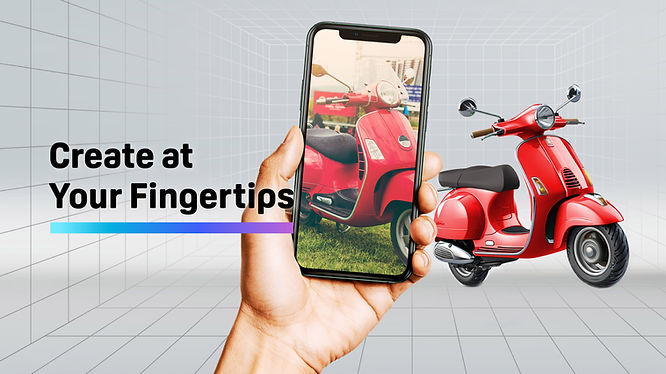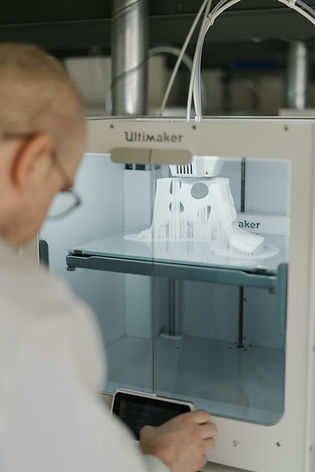What is 3D Modeling? Meaning, Definition, Creation, and Application Explained

The meaning and definition of 3D Modeling involve understanding the concept of three dimensions—width, height, and depth. Everything in the physical world and its observable contents exists in these three dimensions. While films and photos are interpreted by our brains as two-dimensional (2D), true physical existence requires all three dimensions due to the atomic structure of matter. In digital computing, a 3D image refers to a graphic that portrays depth, resembling real objects. This technique is prevalent in movies, video games, digital graphics, and VR experiences, particularly within the metaverse. 3D modeling involves creating a digital representation of an object or scene using specialized software, crafting it with geometric shapes and structures. Artists and designers use various tools to shape these models, defining their form and intricate details.
How to Create 3D Models
Step 1: Conceptualization
Begin with a clear idea of what you want to create. Gather reference images, sketches, or concept art to guide your design.
Step 2: Modeling
Choose the appropriate 3D modeling software based on your needs. Popular options include Blender, Autodesk Maya, 3ds Max, ZBrush, and SketchUp.
Step 3: Sculpting
Use sculpting tools to add high-resolution details to your model.
Step 4: Retopology
Simplify and optimize the topology of your model for better performance in real-time applications.
Step 5: UV Unwrapping
Unwrap the 3D model into a 2D space to create UV maps, which are necessary for texturing.
Step 6: Texturing
Apply base colors, materials, and detailed textures such as dirt, scratches, and other surface details to your model.
Step 7: Rigging
Create a skeleton (rig) for your model if it needs to be animated.
Step 8: Animation
Develop animations using keyframes or motion capture data as required.
To simplify the process, you can leverage advancements in artificial intelligence with the following popular methods to create 3D models:
1. Text to 3D

Enter concise and straightforward text in the text box to generate 3D models. Try to avoid abstract descriptive words to get 3D models you desire.
Learn more: Top 6 AI 3D Model Generators
2. Convert 2D images to 3D

Converting 2D images to 3D involves estimating depth and spatial structure from flat images. Techniques such as depth estimation, stereo vision, and AI are employed to reconstruct 3D models. This process facilitates applications in VR, AR, and 3D printing.
Learn more: Pixel to Polygon: Converting 2D Images to 3D Models – Top Tools Revealed
3. 3D scanner applications

Using the device’s camera, the scanner apps take multiple photographs of the object from different angles, relying on overlapping images to capture detailed information. They then stitch these images together to form a complete view of the object, aligning them based on common features and merging them into a cohesive whole.
Learn more: Create at Your Fingertips: Top 10 3D Scanner Apps for Creators (iPhone & Android)
What is 3D Modeling Used For
Manufacturing and Product Design

In product design and manufacturing, 3D modeling is essential for streamlining the production process. It facilitates the use of augmented reality (AR)-guided assistance during production, validates virtual assembly processes, enhances technician training, and simulates factory operations. These applications enhance efficiency, accuracy, and overall productivity. 3D modeling enables the creation of virtual prototypes, which can be tested and refined in a digital environment, allowing engineers to identify and address potential issues before actual manufacturing begins. Additionally, 3D modeling supports the creation of custom products, enabling manufacturers to produce unique items tailored to specific customer requirements.
Architecture and Interior Design

For architects and interior designers, 3D modeling provides the capability to create real-time building information modeling (BIM) experiences, conduct immersive design reviews, and seamlessly integrate design and construction processes. It enables stakeholders to visualize designs realistically and interactively, fostering effective collaboration and ensuring that design objectives are met. Additionally, 3D modeling can offer potential buyers a more realistic and engaging experience.
Gaming

3D technology allows game developers to craft realistic and visually captivating environments, characters, and objects, enhancing the lifelike quality of the game world. Furthermore, 3D technology supports more dynamic and intricate gameplay mechanics, enabling players to interact with objects and characters in novel ways. This adds complexity and excitement to the game, maintaining player engagement and interest. Beyond traditional video games, 3D technology also enables the development of virtual reality (VR) and augmented reality (AR) games, broadening the scope of immersive gaming experiences.
Metaverse

3D modeling facilitates the creation of virtual objects, structures, and landscapes, enabling users to explore and interact with the metaverse in a more lifelike manner. Additionally, it can be used to craft avatars and virtual models of real-world people and items, allowing for interactive experiences in a digital environment. Take VIVERSE for example, users get to choose from realistic and character avatars to represent their digital persona and display 3D models in the immersive Worlds, where people can enjoy virtual gatherings as long as they want.
Healthcare

Through 3D printing, 3D modeling can produce patient-specific anatomical models such as organs, bones, and blood vessels. These models enable surgeons to plan and rehearse complex surgeries in advance, reducing risks and ensuring more precise and effective operations. In medical research, 3D modeling creates detailed biological system models, helping scientists study diseases, innovate treatments, and test medical devices in a virtual environment.
Recap and Summarize
From the foundational concepts of 3D computer graphics and modeling to the intricate process of creating 3D models, this guide provides a comprehensive overview. As we explore its diverse applications, spanning from product design to gaming and healthcare, the significance of 3D modeling becomes apparent. Indeed, it is integral to numerous facets of modern life. With ongoing technological advancements, 3D modeling will undoubtedly play an increasingly vital role in shaping our digital and physical worlds, offering endless possibilities for innovation and creativity.